A Glimpse Inside My Creative Process
Discovery → Research → Brainstorm → Ideate → Design → Revise
You know that feeling when you're about to fall asleep, and suddenly, you have the best idea ever? Then you sit there thinking… Should I get up? Should I write this down? And most commonly, Ah, I’ll remember it in the morning. Only to wake up the next day and—poof—no idea in sight.
Me too, friend. We've all been there. I think it’s one of the unique things about being a creative (or just a human in general).
Other than keeping a pen and notepad next to my bed, I’m not really sure how to hold onto those fleeting ideas. But when you're kicking off a project and need that extra push of inspiration to get started, having a creative process is a great place to begin.
Here’s a glimpse into mine.
Discovery → Research → Brainstorm → Ideate → Design → Revise
Discovery
During this phase, I dive deep to understand the client's needs. Some key questions I ask include: What is the purpose of this project? What are your core values and mission? What are you hoping to achieve? Who are the stakeholders? What makes you unique?
I also discuss budget, deliverables, timeline, and other logistics—really fleshing out the details to ensure we're all on the same page from the start.
Research
This is one of my favorite parts of the process—digging into archives, competitors, past campaigns, social platforms, websites, and more to uncover the essence of the brand or company.
I use whiteboard-style digital platforms (Miro is my current favorite) to compile all this information in one place, ensuring the client has easy access.
Brainstorm
Once I’ve compiled all the research and gained a clear understanding of the project’s vision, I move on to brainstorming. This is where I explore potential design ideas, do a full brain dump of my thoughts, and then refine them into two (or more) mood boards that capture the project's direction.
Some of my favorite places to gather inspiration include Pinterest, Are.na, Behance, It’s Nice That, Creative Boom, Google searches, past branded materials, and photography.
A few samples of mood boards I've created are below ↓
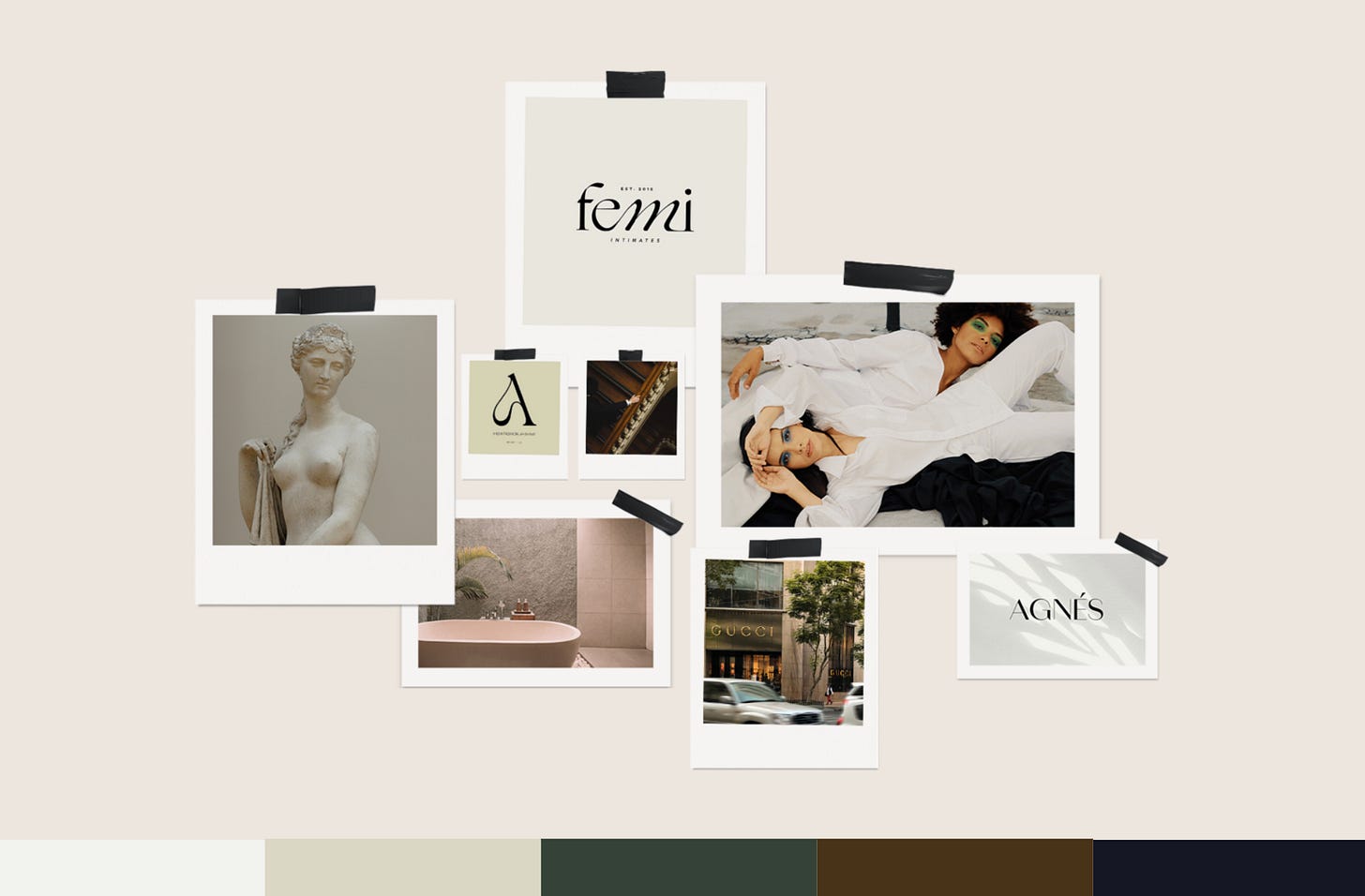
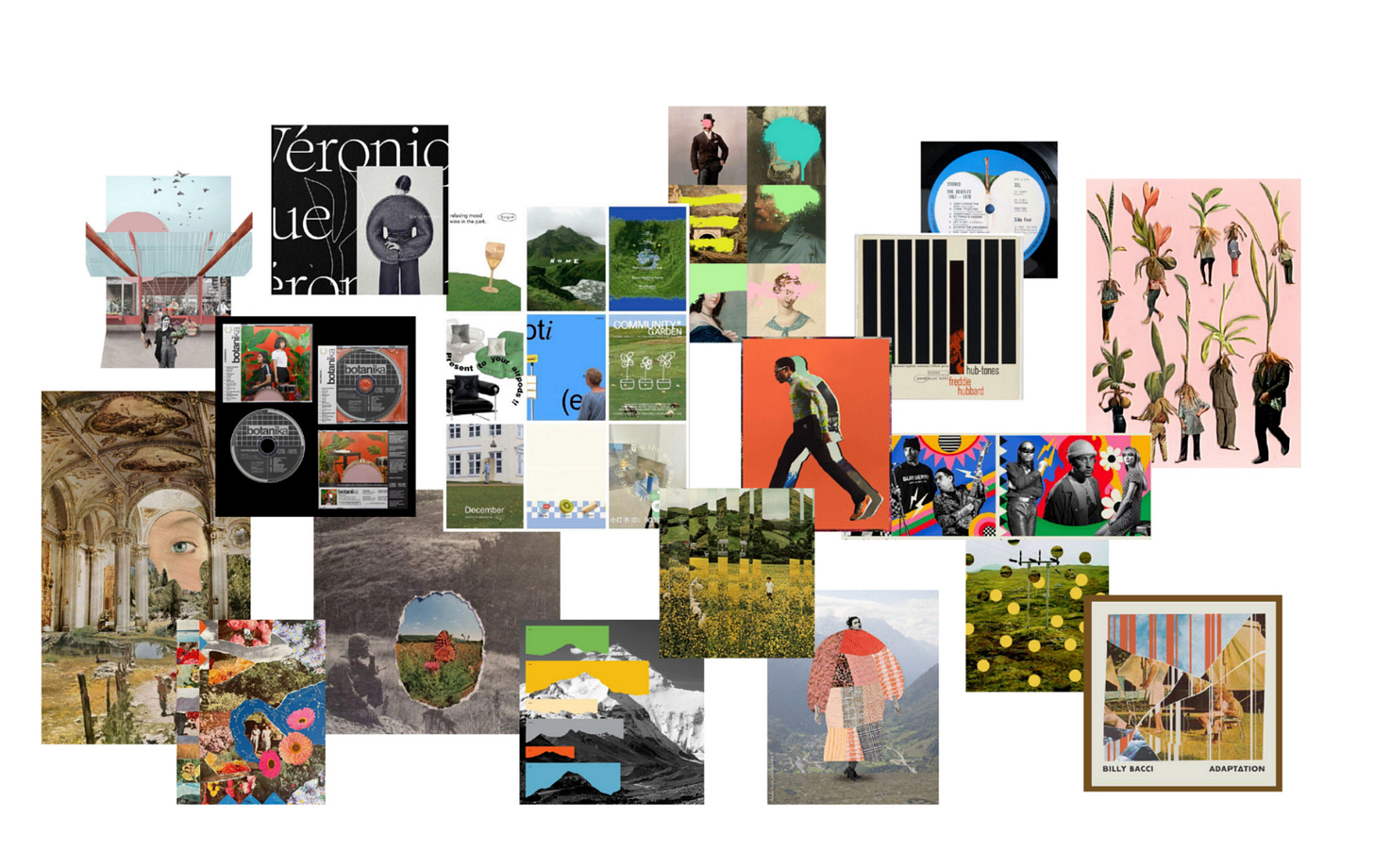
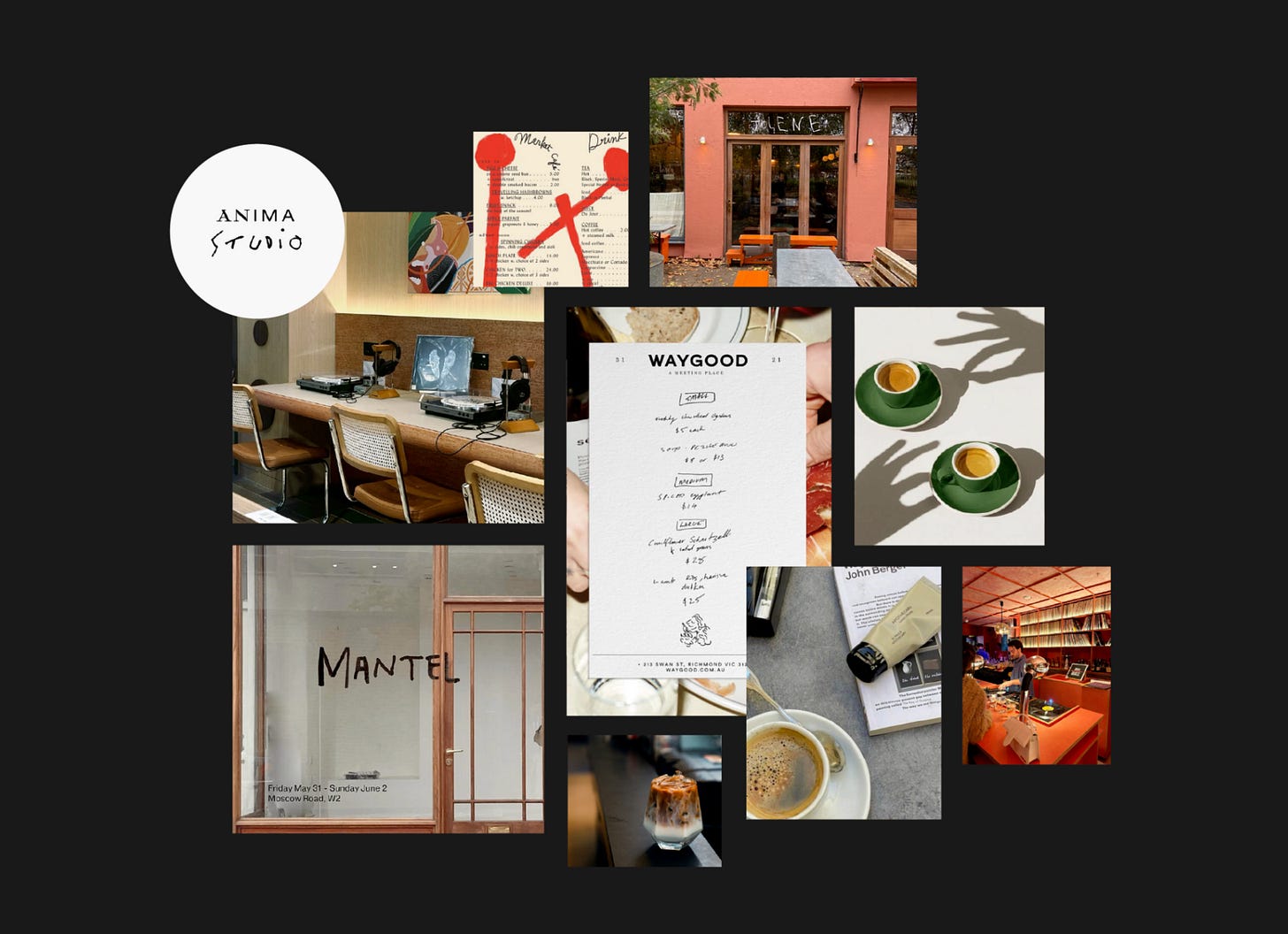
Ideate
During the ideation phase, I develop a few different concepts to present to the client. This helps secure their buy-in on the direction before diving fully into the rest of the project.
It’s a great way to ensure the client is aligned with your vision, so you don’t get too far along in a direction they might not love.
Design
The best part! Watching the magic unfold and everything come together. This is where the project really takes shape and starts to look like a finished piece. It’s definitely the longest part of the process. I typically prefer to work through this phase on my own, but I set up client checkpoints along the way to keep them updated on the progress.
Lots of caffeine is needed throughout this step in the process as well.
Revise
If you're familiar with the creative process, you know that revisions are always part of the journey. These can range from larger changes to smaller tweaks, depending on the client's feedback. However, if you've secured their buy-in through mood boards and concepts, you’ll likely face fewer revisions!
Once we've worked through those adjustments, it's time to hand over the final files and move on to the next project.
AND THAT’S A WRAP!
THE MOODBOARD ⬇
In line with the theme of this post, I came across this Substack about knowing your creative cycle where the writer showed a drawing by the artist Nicole Eisenman, from her exhibition with, and, of, on Sculpture.
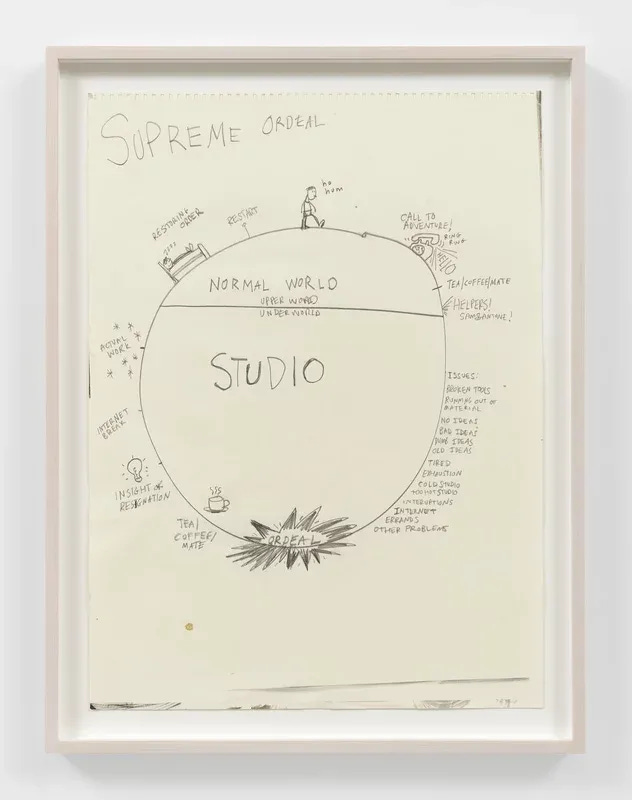
It really resonated with me. As much as I would love to say that my creative process works perfectly every single time, sometimes there are extra steps involved. Getting a call from a friend or family member, doing laundry, running an errand, grabbing a bite to eat, feeling uninspired and stepping away for some fresh air, or getting another cup of coffee... you get the picture. I love the realness of this article and highly recommend reading it. Towards the end, he even shares some of the readers' iterations of the above, and I think we could all find at least one to relate to.
Another great read (the design work is pretty amazing too).
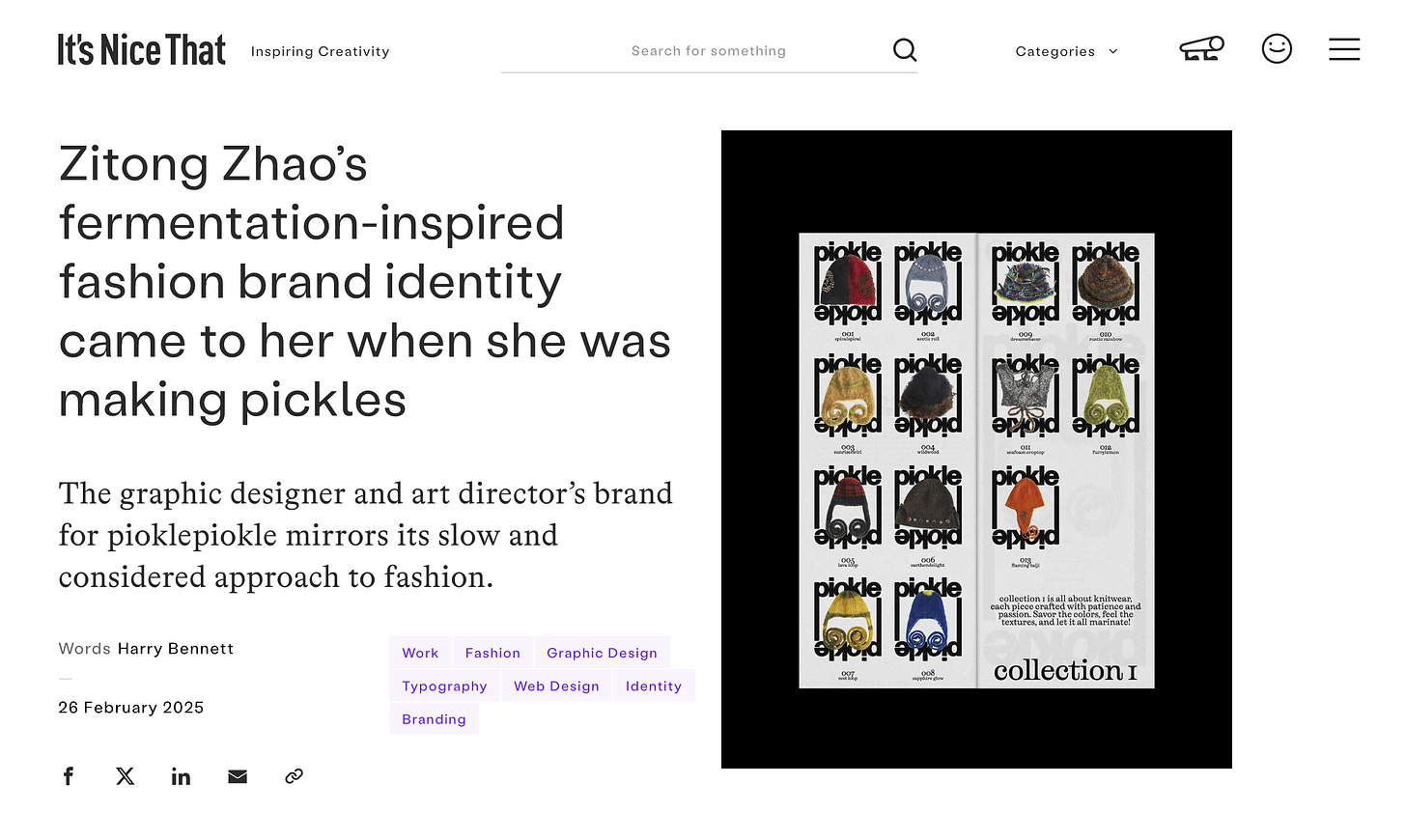
In case you don’t read the full article, I at least wanted you to see this excerpt below.
“While some may see patience and deliberation as contrary to spontaneity, we view it differently – in our creative process, spontaneous moments spark ideas,” Tong continues. Tong therefore uses fermentation as a metaphor for creativity and growth, where time transforms ingredients into something more flavourful than the sum of its parts. “Even the brand name itself – a playful twist on the word pickle – reflects this ethos, with the substitution of ‘c’ with ‘o’ to promote a relaxed, ‘ok’ attitude,” she adds.
Until next time,
Bailey








